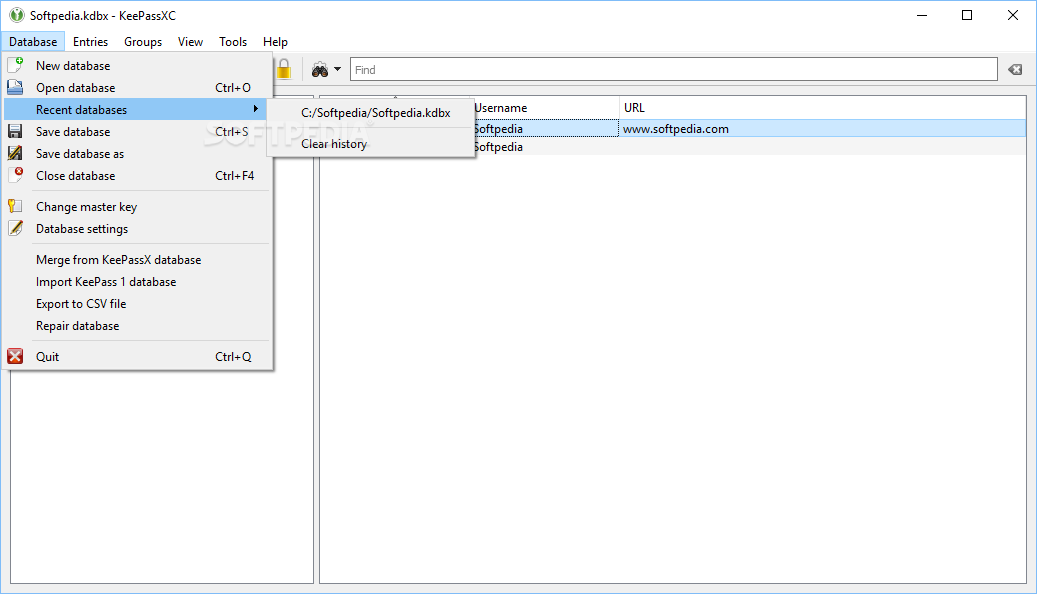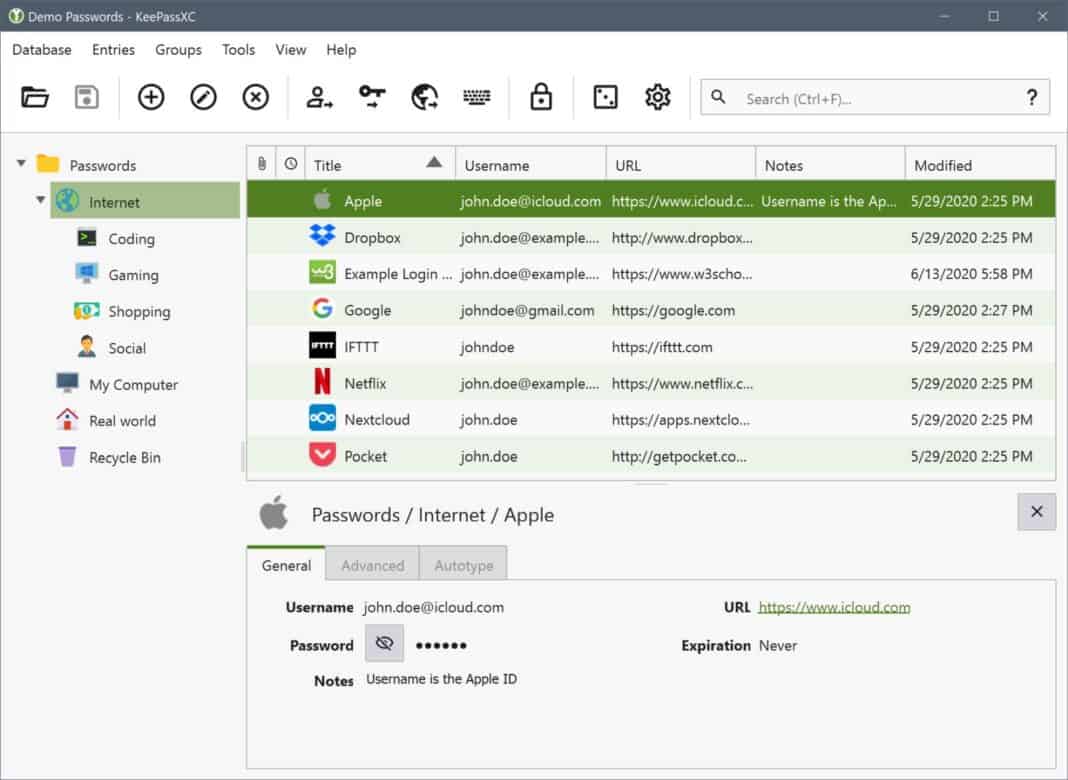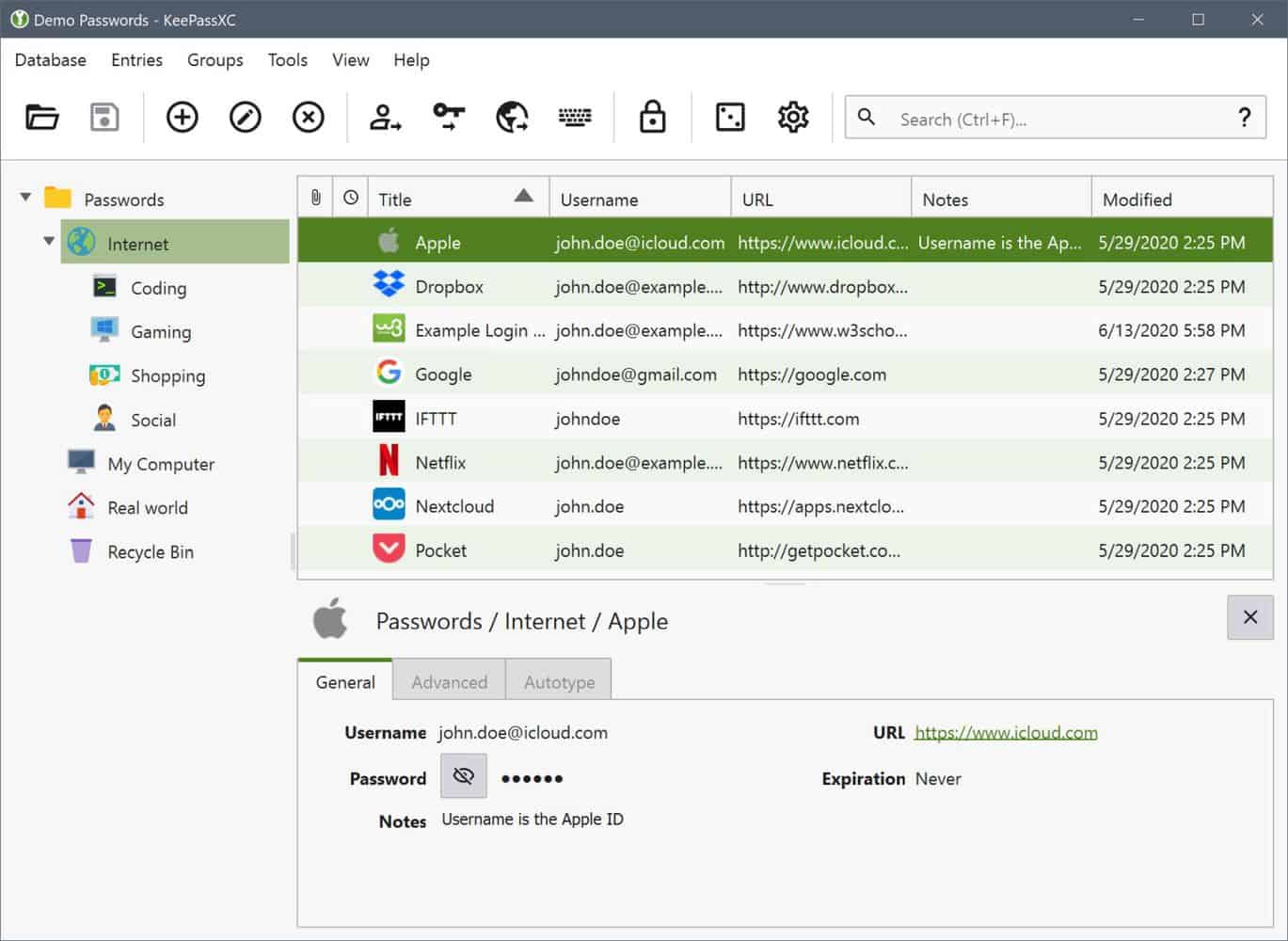

Once the database has been created, you can start creating your first entry. Of course, if you choose a cloud storage, a particularly strong master password is recommended, better if accompanied by additional protection. If you want to share with other computers / devices you can save it on a USB key or in a cloud storage like pCloud or Dropbox. The database file will be saved to the file system. As additional protection you can choose a key file (remember: you must always have it available otherwise you cannot open the wallet) and / or a YubiKey hardware key. Choose the master key and additional protections: the master key must be easy to remember (if you lose it your wallet is lost!) but strong enough, a passphrase with at least 4 random words can be a good choice.Choose the encryption settings: the default settings are reasonably safe, increasing the transform rounds also increases the decryption time.

To create a new database there are two important steps:
#Keepassxc encrypted database install
Sudo dnf install keepassxc Creating your wallet

Unfortunately the integration with the browser does not work with the application running in the sandbox, so I suggest to install the program via dnf: The program is available both in the standard Fedora repository and in the Flathub repository.
#Keepassxc encrypted database generator
It also has a valid password generator that helps the user to correctly manage his credentials. In addition to the passwords, KeePassXC allows you to save various information and attachments in the encrypted wallet. It saves the secrets in an encrypted database with AES algorithm using 256 bit key, this makes it reasonably safe to save the database in a cloud drive storage such as pCloud or Dropbox. KeePassXC is an open source cross platform password manager: its development started as a fork of KeePassX, a good product but with a not very active development. No server-side technology expertise is required and can therefore be used by any type of user. The main advantage of this type of password management is simplicity. In this article we will talk about KeePassXC, a simple multi-platform open source software that uses a local file as a database. These tools are very interesting and suitable for a cloud installation. A previous article discussed password management tools that use server-side technology.


 0 kommentar(er)
0 kommentar(er)
